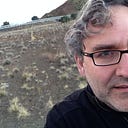Member-only story
ʻAbdu’l-Bahá’s Tablet of the Universe
Through the Lens of Renormalization Group Theory
In June of 1947 a group of eminent physicists gathered together on Shelter Island in Long Island New York. The group included the likes of Richard Feynman, Oppenheimer, Von Neumann and Teller. The godlike and terrible power unleashed by the collective efforts of many of these physicists was still fresh in the minds of the American public. Upon arrival in New York, they were regarded as celebrities and provided a police escort in their bus drive to the eastern end of Long Island. Before taking the ferry from the town of Greenport to Shelter Island, they were treated to a grand dinner hosted by president of the Greenport Chamber of Commerce John C. White — a grateful former marine in the Pacific war.
They collectively had been struggling for the past 15 years to apply quantum mechanics to describe the interaction of light and matter. This theory was known as Quantum Electrodynamics or QED. One question of particular interest at this meeting dealt with the finer details of how hydrogen absorbed light. Recent experimental results were presented at this conference by Willis Lamb and Robert Retherford. Their experiment had shown that two energy states of the hydrogen atom, which should have the same energy according to the Dirac equation, differed slightly. Oppenheimer and…
